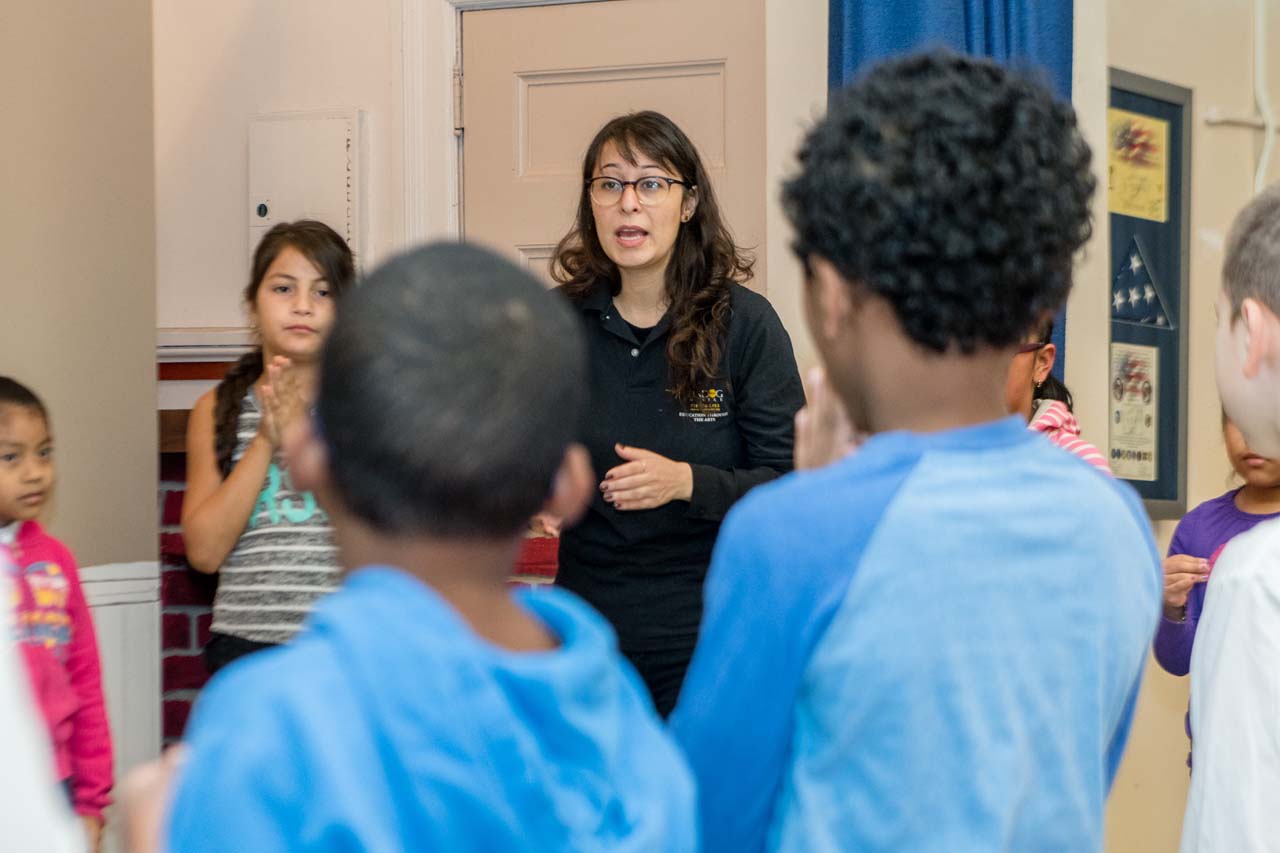how an island Theatre is changing kids’ lives through the arts
by JENNIFER VIKSE • photos By Lance J. Reha
Some know Sundog Theatre for shows it has produced, such as The Fantasticks, Charlotte’s Web, The 39 Steps, and A Christmas Carol. Others might be familiar with its original pieces like: My Mariners, about the sailors at Snug Harbor; If You Could See: The Alice Austen Story, about the iconic Island photographer and pioneer; Meucci’s Message, which describes Staten Islander Antonio Meucci’s invention of the telephone; and Scenes from the Staten Island Ferry. Many are unaware, however, that the Theatre is also changing the way Island children learn. The 14-year-old Sundog’s in-school programs, like 3D Literacy and Smart Money Kids (SMK), support its mission of creating lasting, positive change in kids’ lives through the arts.

“We have some innovative, very cool programs,” noted Susan Fenley, Executive Director of the Theatre. “It’s important to expose children to different styles of learning.”
The 3D Literacy Program, started six years ago, is an interactive effort created and developed by Sundog teaching artist Richard Grunn. Designed to help teachers integrate theatre games, abstract concepts, and technology into the literacy curriculum, it incorporates multiple intelligences and brain-based learning theories to boost the social health of classes.
“We explore elements of literacy—phonology, spelling patterns, word meaning, grammar, and word formation,” noted Grunn. “Our exercises and concepts help students’ abilities to understand, interpret, create, infer, and communicate in various levels associated with literacy.”
The impetus behind the program was a poorly performing school that looked for ways to improve kids’ literacy, and turned to Sundog for help. “The idea was that the teaching artist would work with struggling readers through theatre,” noted Fenley. “It was a perfect match.”
The program, funded by the Staten Island Foundation, is now thriving in nearly a dozen schools on the Island and offered to over 400 students. Over 80 percent of the kids increased their reading scores as a result, but the program also encourages them to develop a tolerance for a variety of personalities and ideas.
“Some of the kids who would be class clowns…could actually learn things in a different way and catch up with the other kids. It gave them confidence and changed their approach to education,” explained Fenley. “It has great side effects.” It also works well for English as a Second Language and special education learners, Fenley added. “Through the arts, whether theater, dance, or visual, it’s a way in for them. They respond differently to art than they do to traditional learning. It’s just a different way of settling into the brain, so to speak.”
Educators and parents agree that the program’s unique approach is changing lives.
“Our students benefited greatly from 3-D Literacy—academically, socially, and behaviorally,” said Cynthia Leonard, Assistant Principal at PS 44. “One student with Autism Spectrum Disorder actually went up four reading levels during the 15 weeks of the program. She participated throughout and was part of the culminating performance. Her mother cried tears of joy when she saw this.”
Another popular initiative, Smart Money Kids, is a 15-week hands-on after-school creative financial literacy program for fourth and fifth graders, part of the STEM (Science, Technology, Engineering, Math) series of learning opportunities. Students engage in weekly, two-hour after school creative business workshops led by teaching artist Melissa Tierney, working in groups creating small businesses while learning about marketing, design, budgeting, pitching to investors, and customer service. Fenley said that it’s an ideal segue into middle school.
While the program takes a different approach to learning, it has been designed on a school-needs basis.
“It’s not a cookie-cutter program; we either develop a program for each school’s need, or we adapt one,” Fenley explained. “Further, it’s imperative for children to learn to think critically, not just memorize answers to questions, and we help with that, too.”
And this won’t be the last stop for Sundog. “One of our dreams is to have an elementary school where art is in every subject, in every single thing they study,” said Fenley. “It really has an effect of making kids more interested in coming to school…because it’s fun.”
Sundog Theatre
sundogtheatre.org


